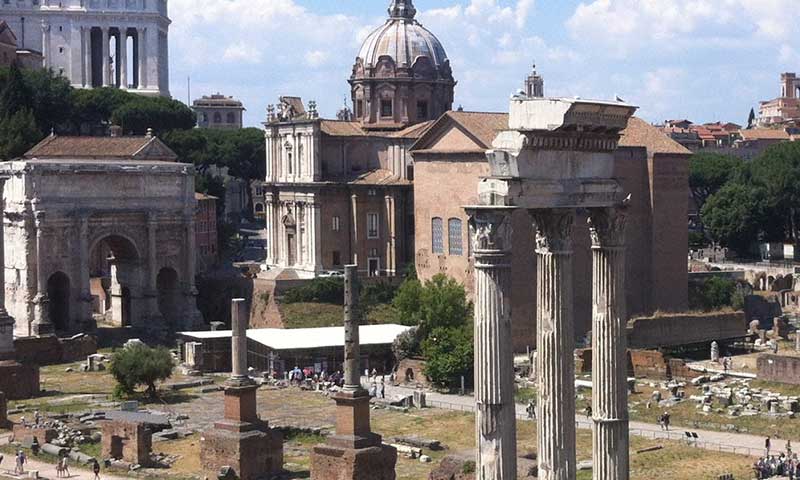Speakers
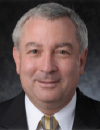
Robert Bernhard speaking 3 april 9:30am
Vice President for Research and Professor of Aerospace & Mechanical Engineering, University of Notre Dame
Robert J. Bernhard received his Ph.D. in Engineering Mechanics from Iowa State University in 1982. He was employed as an Engineer with Westinghouse Electric Company in Baltimore Maryland from 1973-1977. He was an Assistant Professor of Freshman Engineering at Iowa State University from 1977-1982 and a faculty member in the School of Mechanical Engineering at Purdue University from 1982-2007. He was the Director of the Ray W. Herrick Laboratories at Purdue University from 1994 through 2004 and the Director of the Institute for Safe, Quiet, and Durable Highways from 1998 to 2007. He was the Associate Vice President for Research at Purdue University from December 2004 to August 2007. He was elected Vice President for Research and appointed Professor of Aerospace and Mechanical Engineering at the University of Notre Dame beginning August 1, 2007. His research work is in the area of noise and vibration control. He has directed the research of 49 engineering graduates and has co-authored more than 170 journal and conference publications on various aspects of noise control engineering including machinery noise and tire/pavement noise control. He is a past President of the Institute of Noise Control Engineering, USA, and has been the Secretary General of the International Institute of Noise Control Engineering since 2000. He is a Fellow of the American Society of Mechanical Engineers, a Fellow of the Acoustical Society of America, and was named a Distinguished Noise Control Engineer and Fellow of the Institute of Noise Control Engineering.
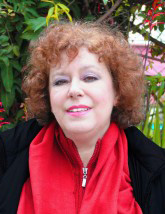
Mariarosaria Barbera speaking 3 april 10:00am
Soprintendente, Soprintendenza Speciale per i Beni Archeologici di Roma (Special Superintendency for the Archaeological Heritage of Rome)
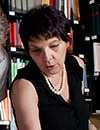
Patrizia Fortini speaking 3 april 10:15am, Heritage Management Workshop Panel, 4 april 9:30am
Soprintendenza Speciale per i Beni Archeologici di Roma (Special Superintendency for the Archaeological Heritage of Rome)
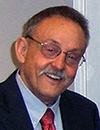
James Packer speaking 3 april 11:30am Abstract (PDF)
Professor of Classics, Northwestern University
James E. Packer is Emeritus Professor of Classics at Northwestern University. He is the author of the three-volume The Forum of Trajan in Rome (1997); of numerous articles in journals, including the American Journal of Archaeology, the Journal of Roman Archaeology, the Bullettino della Commissione Archeologica Comunale di Roma, the Maryland Historian, Natural History, Croniche Pompeiane, Technology and Culture, Curator, Inland Architect, Archeo, and Archaeology; and of articles in collections, including the Lexicon Topographicum Urbis Romae (1993-2000). He is the recipient of many grants, including those from the Samuel H. Kress Foundation, the Getty Grant Program, the National Endowment for the Humanities, and the Andrew W. Mellon Foundation. He has excavated at Pompeii, in the Forum of Trajan (Rome), and in the Theater of Pompey (Rome). 'The Forum of Trajan' exhibition at the opening of the new Getty Museum in Los Angeles (1997) was based on Packer's work.
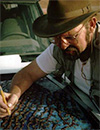
Ronald Blom speaking 3 april 13:30 (1:30pm), NASA Workshop Panel, 4 april 13:30 (1:30pm) Abstract (PDF)
Program Manager, Solid Earth Science and Natural Hazards, NASA Jet Propulsion Laboratory
Dr. Ronald Blom is a geologist specializing in applications of space technology at NASA’s Jet Propulsion Laboratory, California Institute of Technology, Pasadena California. While his primary duties have been in the use of space technologies applied to geological and geophysical research, during his long career he has been involved in a number of archaeological investigations. He has taught portions of workshops on applications of remote sensing to archaeology, and had taught an extension course at UCLA on “Earth Science for Archaeologists”.
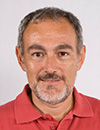
Roberto Scopigno speaking 3 april 14:00 (2:00pm) Abstract (PDF)
Head of Visual Computing Lab of Institute of Information Science and Technologies of CNR, Pisa, Italy
Roberto Scopigno is a Research Director at CNR-ISTI and has 20 years of experience on 3D graphics (digitization, multi-resolution encoding, visualization, geometry processing) and its application to the Cultural Heritage domain. He is author of more than 200 international papers, with Google Scholar h-index 39 and more than 7100 citations.
Roberto served in the Eurographics Association (General Chair in 2009-2010), was Chief Editor of international Journals (Computer Graphics Forum and ACM Journal of Computing and Cultural Heritage) and was the organizer of several international events.

Gil Gorski speaking 3 april 15:00 (3:00pm) Abstract (PDF)
Associate Professor, School of Architecture, University of Notre Dame
Gilbert J. Gorski, (Illinois Institute Of Technology, Chicago: BA, MA Architecture), a licensed architect, is the designer for numerous projects, including the World Headquarters for the McDonald's Corporation in Oak Brook, Illinois and the Oceanarium, a major addition the John Shedd Aquarium in Chicago. Gorski has also served as a studio professor at the Illinois Institute of Technology and at The School of the Art Institute in Chicago. He presently holds the James A. and Louise F. Nolen Chair in Architecture as Associate Professor at the University of Notre Dame. In 1987 Gorski was designated the Burnham Fellow by the Chicago Architectural Club and was awarded an associate fellowship to the American Academy in Rome. The American Institute of Architects awarded Gorski a National Collaborative Achievement Award in 2003. In 1990 and in 2002, the American Society of Architectural Illustrators awarded Gorski the nation’s highest singular honor in architectural illustration, the Hugh Ferriss Memorial Prize.
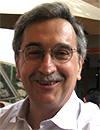
Piero Baglioni speaking 3 april 15:30 (3:30pm) Abstract (PDF)
Director, National Center for Colloid Nanosciences (CSGI) and Professor, University of Florence
Piero Baglioni is the chair of Physical Chemistry at the Department of Chemistry of the University of Florence since 1994. He was appointed as Visiting Scientist/Professor by the Department of Chemistry of the University of Houston, the Weizmann Institute, the Collège de France, and the MIT. He is the Director of the National Center for Colloid Nanosciences (CSGI) and he is in the Advisory Board of several intentional Journals and member of the scientific board of several national and international Institutions and Societies.
Piero Baglioni is the author of more than 350 publications on books and largely diffused international journals. He is also the author of 21 patents.
In the field of Conservation he has proposed innovative methods that used world wide, and can be schematically grouped in the following areas:
- Restoration and conservation of the pictorial surface of frescoes.
- Removal the organic contaminants by means of micelles and microemulsions.
- Consolidation of the wall paint structure by means of autogenic mortars.
- Salt-induced degradation.
- Innovative process for paper deacidification using nanoparticles of calcium hydroxide.
- Innovative process for wood de-acidification based on calcium and magnesium hydroxide and carbonate nanoparticles in non aqueous solvents.
- Nanosponges, chemical and physical gels for the confinement of micellar system and microemulsions for: detergency, drug delivery, controlled release delivery with spatial, chemical, and kinetic control.
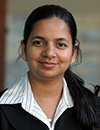
Krupali Krusche speaking 3 april 16:00 (4:00pm), co-hosting NASA Workshop, 4 april 13:30 (1:30pm) Abstract (PDF)
Director of DHARMA (Digital Historical Architectural Research and Material Analysis) and Associate Professor of Architecture, University of Notre Dame
Prof. Krupali Uplekar Krusche teaches architectural design and historic preservation at the School of Architecture, University of Notre Dame. In 2007, Prof. Krusche started the DHARMA (Digital Historic Architectural Research and Material Analysis) research lab, specializing in 3D documentation of World Heritage Sites. In 2008, the team started its first major project by documenting four renaissance age major tomb monuments in India, one of them being Taj Mahal. In January 2012, they conducted their second phase of the project, including 3D scanning of Akbar's and Itmud-ud-daulah's tomb in partnership with the Archeological Survey of India. The proposal is extended to start a Yamuna River front study for this area in the next four years. In 2010, she and her team documented the world renowned Roman Forum, Rome, Italy in partnership with the Soprintendenza Speciale per i Beni Archeologici di Roma, Ministry of Heritage and Culture, Rome. A 3D exhibit is being planned as a result of this project in 2014 at the forum site. Both projects are being planned under the MoU with the World Heritage Center of UNESCO.
Prof. Krusche co-authored a book with Vinayak Bharne titled Rediscovering the Hindu Temple, Cambridge Scholars Press, Nov 2012.
Before joining Notre Dame, Prof. Krusche worked with the Structural Design Department at the Technical University of Dresden. Prof. Krusche also chaired INTBAU-India and has been a board member for many of INTBAU chapters for the last decade. In this role, she led a team of 26 architects and architecture students in producing a proposal for the revitalization of Mumbai Mills. Since then she has been directing students at Notre Dame in developing a strong understanding for traditional architecture in India.

John Stubbs hosting Heritage Management Workshop, 4 april 9:30am
Senior Professor of Architectural Preservation Practice and Director of the Master of Preservation Studies program, School of Architecture, Tulane University
John H. Stubbs is Favrot Senior Professor of Preservation Practice and Director of the Master of Preservation Studies program at the Tulane School of Architecture in New Orleans, Louisiana. He assumed his present position in July 2011 after over three decades of architectural conservation practice in New York City that included over two decades serving as Vice President for Field Projects for the World Monuments Fund and as adjunct Associate Professor of Preservation in Columbia University's Graduate School of Architecture, Planning and Preservation. He attended ICCROM as a UNESCO Fellow in 1977.
John Stubbs’s career began as a surveyor and illustrator at the ancient Roman sites of Cosa and Pompeii and the Greco-Roman period Egyptian seaport of Quesir on the Red Sea. He contributed chapters on sheltering ruins to the seminal ICCROM-published Conservation on Archeology Sites (1986) and on conserving Classical architecture for the forthcoming Oxford Handbook of Classical Archaeology.
A short course at the Lerici Foundation on archaeological prospecting was the source of his inspiration to organize the first JPL-NASA SIR-C/X-SAR space shuttle-acquired radar image survey of Angkor in1994.
Since 2001 John Stubbs has led a research effort documenting the history, parameters and practice of architectural conservation in all parts of the world that has thus far yielded Time Honored’ A Global View of Architectural Conservation and Architectural Conservation in Europe and the Americas published by John Wiley & Sons. The project is described at www.conservebuiltworld.com.
In addition to his duties at Tulane John Stubbs serves as a senior advisor to the World Monuments Fund and is involved with a number of consulting projects.
Veronique Dauge Heritage Management Workshop Panel, 4 april 9:30am
Head of Culture Unit - UNESCO Regional Bureau for Science and Culture in Europe
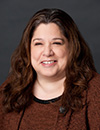
Lisa Ackerman Heritage Management Workshop Panel, 4 april 9:30am Abstract (PDF)
Executive Vice President and Chief Operating Officer, WMF
Lisa Ackerman is Executive Vice President and Chief Operating Officer of World Monuments Fund, an organization founded in 1965, which has assisted in the conservation and development of long-term stewardship strategies at more than 600 sites in 100 countries. Ms. Ackerman holds an appointment as Visiting Assistant Professor at Pratt Institute. Previously Ms. Ackerman served as Executive Vice President of the Samuel H. Kress Foundation, a private foundation dedicated to European art and architecture from antiquity through the early 19th century. Ms. Ackerman holds an MS degree in Historic Preservation from Pratt Institute, an MBA from New York University, and a BA from Middlebury College. She serves on the boards of Historic House Trust of New York City, New York Preservation Archive Project, and US/ICOMOS. She previously served on the boards of St. Ann Center for Restoration and the Arts, Partners for Sacred Places, and the Neighborhood Preservation Center. In 2007 she received Historic District Council’s Landmarks Lion award. In 2008, Ms. Ackerman was named the first recipient of US/ICOMOS’s Ann Webster Smith Award for International Heritage Achievement.
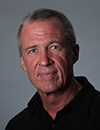
Robin F. Rhodes Heritage Management Workshop Panel, 4 april 9:30am Abstract (PDF)
Department of Art, Art History, and Design, Department of Classics, School of Architecture, University of Notre Dame
Robin Rhodes is an archaeologist and historian of classical art and architecture and is Principal Investigator of the Greek Stone Architecture at the Corinth Excavations of the American School of Classical Studies at Athens. His most recent work includes the final preparation of a monograph on perhaps the earliest monumental temple in Greece, The Seventh Century Temple on Temple Hill in Corinth; the collaborative creation and curation of an exhibit of the Athenian Acropolis for the National Hellenic Museum in Chicago; and the curation of an exhibit of drawings of vernacular Greek architecture and traditional Greek boats (kaikia). Other recent work includes the creation and curation of the exhibit, “The Genesis of Monumental Architecture in Greece: the Corinth Project”; the organization and moderation of the accompanying symposium on “Issues in Architectural Reconstruction;” and the publication of edited volumes on The Acquisition and Exhibition of Classical Antiquities: Professional, Legal and Ethical Perspectives, and on Eclectic Antiquity: The Classical Collection of the Snite Museum of Art. His book, Architecture and Meaning on the Athenian Acropolis (Cambridge U Press) is in its 5th printing. He has been a recent recipient of a multi-year National Endowment for the Humanities Collaborative Research Grant and a Kress Foundation Grant, and he has been the NEH Senior Research Fellow at the American School in Athens, the Morgan Chair of Architectural Design at the University of Louisville, and the Graham Lecturer in Classical Architecture for the Archaeological Institute of America.
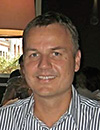
Jarek Nabrzyski Co-Hosting NASA Workshop Panel, 4 april 13:30 (1:30pm) Abstract (PDF)
Director, Center for Research Computing, University of Notre Dame
Jarek Nabrzyski is the director of the University of Notre Dame's Center for Research Computing. Before coming to Notre Dame Nabrzyski led the Louisiana State University's Center for Computation and Technology, and before that he was the scientific applications department manager at Poznan Supercomputing and Networking Center (PSNC). Throughout his career Nabrzyski worked on many interdisciplinary projects developing sophisticated cyberinfrastructure tools for science, engineering, medicine and arts, that involved optical networks, storage, visualization and high performance computing. It was at PSNC where he got interested in building science gateways and distributed computing middleware tools. During his tenure at PSNC Nabrzyski has built a team that developed and supported the GridSphere portlet framework, and later the VineToolkit framework. Both were used in many collaborations worldwide. While in Europe Nabrzyski was involved in more than twenty EC funded projects, including GridLab, CrossGrid, CoreGrid, GridCoord, QoSCoSGrid, Inteligrid and ACGT. Within his last five years at Notre Dame Nabrzyski has been focused on building the Center for Research Computing. The Center, a 40+ staff and faculty research enterprise has been involved in many research projects funded nationally and internationally, including DHARMA heritage project with Prof. Krupali Uplekar.
Nabrzyski has received his M.Sc. and Ph.D. in Computer Science and Engineering from the Poznan University of Technology in Poland. His research interests cover distributed resource management and scheduling, cloud computing, scientific portals, and decision support systems.
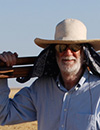
Compton J. Tucker NASA Workshop Panel, 4 april 13:30 (1:30pm) Abstract (PDF)
Hydrospheric and Biospheric, NASA
Compton Tucker, received his B.S. degree in biological science in 1969 from Colorado State University in Ft. Collins. After working for Colorado National Bank in Denver and the First National Bank in Albuquerque, he returned to Colorado State University for graduate school and received his M.S in 1973 and his Ph.D. in 1975, both from the College of Forestry. In 1975, he came to NASA/Goddard as a National Academy of Sciences post-doctoral fellow, and in 1977 became an employee of NASA. At NASA/Goddard, Tucker has used satellite data to study the Earth, in research areas that include famine early warning, deforestation, desert boundary determination, ecologically-coupled diseases, terrestrial primary production, glacier extent, and how climate affects global vegetation. He has also taken part in NASA’s Space Archaeology Program, leading a group that assisted archaeologists mapping ancient sites in Turkey, at the sites of Troy, the Granicus River Valley, and Gordion from 2003-2012.
He has authored or coauthored more than 170 journal articles, is an adjunct professor at the University of Maryland, and is a consulting scholar at the University of Pennsylvania’s Museum of Archaeology and Anthropology. His scientific work has been cited more than 20,000 times and his Web of Science “H” index is 67. He is a Fellow of the American Geophysical Union and has been awarded several medals and honors, including NASA’s Exceptional Scientific Achievement Medal, the Pecora Award from the US Geological Survey, the National Air and Space Museum Trophy, the Henry Shaw Medal from the Missouri Botanical Garden, the Galathea Medal from the Royal Danish Geographical Society, the Vega Medal from the Swedish Society of Anthropology and Geography, and the Mongolian Friendship Medal by the Government of Mongolia.
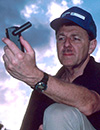
Thomas L. Sever NASA Workshop Panel, 4 april 13:30 (1:30pm) Abstract (PDF)
Professor, Atmospheric Science Department, University of Alabama, Huntsville
Dr. Tom Sever has over 40 years of experience in environmental/archeological research. He was a Principal Investigator at NASA for 27 years before joining the Atmospheric Science Department as a Professor at the University of Alabama-Huntsville in 2008. He has been a pioneer in bringing remote sensing/GIS technology to the disciplines of anthropology and archeology. He has worked with various airborne and satellite systems conducting international research in Israel, Peru, Chile, Mexico, Costa Rica, Guatemala and the U.S. He has also been a pioneer in understanding the role of climate in the rise and collapse of societies. His awards include the University of Alabama Huntsville, Excellence in Teaching Award for the School of Science (2013), the Oberth Award—American Institute of Aeronautics and Astronautics (2010), the NASA Distinguished Service Award (2008), Society of Professional Archeologists (SOPA) Exceptional Achievement Award (1994), NASA Exceptional Achievement Award (1993), and NASA Exceptional Scientific Achievement Award (1992). In addition to the professional literature his work has been featured in National Geographic, Archaeology Magazine, Omni Magazine, Discovery, Newsweek, New York Times, Smithsonian Air and Space, as well as NOVA and the Discovery Channel. He is currently responsible for developing the undergraduate and graduate program in Earth System Science at the University of Alabama, Huntsville.
EDUCATION: 1990, Ph.D. in Anthropology/Archeology, University of Colorado, Boulder, CO; 1984, Tulane University, New Orleans, LA, Anthropological Statistics; 1973-1976, MA + 30 Anthropology/Archeology Sangamon State University, Springfield, Illinois; 1967-1971, B.A. Education Harris College, St. Louis, Missouri, Major - English, Minor - Science.
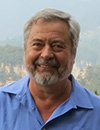
Douglas C. Comer NASA Workshop Panel, 4 april 13:30 (1:30pm) Abstract (PDF)
Principal, Cultural Site Research and Management, Inc., President of the CSRM Foundation, and Co- President of the ICOMOS International Scientific Committee on Archaeological Heritage Management (ICAHM)
Dr. Douglas C. Comer is Principal for Cultural Site Research and Management, Inc., President of the CSRM Foundation, and Co-President of the ICOMOS International Scientific Committee on Archaeological Heritage Management (ICAHM). Dr. Comer has served as Chief of the United States National Park Service Applied Archaeology Center, Chair of the Maryland Governor’s Advisory Committee on Archaeology, Chair of the Nomination Committee for the Register of Professional Archaeologists, as a Trustee for the United States Committee for ICOMOS, and is a Fulbright Scholar in Cultural Resource Management. He has been a Research Fellow at the American Center of Oriental Research in Amman, Jordan, and the Southeast Asian Center for Archaeology and the Fine Arts in Bangkok, Thailand, and is currently a Fellow by Courtesy with the Whiting School of Engineering at The Johns Hopkins University and a Visiting Associate with the NASA Jet Propulsion Laboratory at Caltech (JPL/NASA). He is also a Senior Editor for the ICAHM-Springer Publication Series, Multidisciplinary Perspectives in Archaeological Heritage Management, and Senior Editor for the Conservation and Preservation Section of the Encyclopedia of Global Archaeology (Springer Press). A recipient of research grants from the National Science Foundation (NSF), NASA, The Department of Defense Strategic Environmental Research and Development Program (SERDP), the National Center for Preservation Technology and Training, he has published widely on the use of aerial and satellite remote sensing technologies in archaeology and cultural resource management.
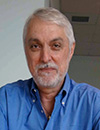
Dennis Doordan Closing Panel, 4 april 16:45 (4:45pm)
Associate Dean of Research, Scholarship and Creative Work, School of Architecture, University of Notre Dame
Dennis Doordan is a design educator, historian, critic, museum consultant and co- editor of Design Issues a journal devoted to the history, theory, and criticism of design and recognized as one of the leading academic journals devoted to design studies. He has a Ph.D. from Columbia University (1983) and a B.A. from Stanford University (1973). He holds a joint appointment in the School of Architecture and the Department of Art, Art History and Design at the University of Notre Dame. Dennis Doordan has published books and articles on a wide variety of topics dealing with twentieth century architecture and design including political design, the impact of new materials, and the evolution of exhibition design techniques. He is the author of Twentieth Century Architecture, a survey of this subject (published in the UK by Laurence King Publishing and in North America by Harry N. Abrams) and the editor or co-editor of The Designed World. Images, Objects, Environments and Design History: An Anthology (both published by MIT Press). He has served as an exhibition consultant and contributed catalog essays for architecture and design exhibitions organized by The Art Institute of Chicago, The Carnegie Museum of Art in Pittsburgh, the Guggenheim Museum in New York City and The Los Angeles County Museum of Art. He has spoken about design education and interdisciplinary research at international conferences in Melbourne Australia (2004) London, England (2002), Perth, Australia (2000), Helsinki, Finland (1999), and Columbus, Ohio (1999).
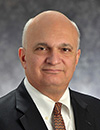
Michael Lykoudis Closing Reception, 4 april 19:00 (7:00pm)
Francis and Kathleen Rooney Dean and Professor, School of Architecture, University of Notre Dame
The Francis and Kathleen Rooney Dean of the School of Architecture, Dean Lykoudis has served as professor of architecture at Notre Dame since 1991. He has devoted his career to the building, study and promotion of traditional architecture and urbanism.
His activities feature the organization of several major conferences that have been collaborations between Notre Dame and other organizations including the Classical Architecture League and the Institute of Classical Architecture & Classical America, A Vision of Europe and the Congress for New Urbanism. The conference and exhibition entitled “The Art of Building Cities,” took place in 1995 at the Art Institute of Chicago and was the first event in this country to specifically link the practice of contemporary classicism with the new traditional urbanism. An exhibition and conference titled “The Other Modern,” took place in Bologna, Italy in 2000, and a conference titled "Three Generations of Classical Architects: The Renewal of Modern Architecture" was held in October 2005 at Notre Dame.
Since 2003, Dean Lykoudis has served as chairman of the Richard H. Driehaus Prize jury. The Driehaus Prize honors, promotes and encourages architectural excellence that applies the principles of traditional, classical and sustainable architecture and urbanism in contemporary society and environments. Dean Lykoudis is the co-editor of two publications, "Building Cities," published in 1999 by Artmedia Press, and "The Other Modern" exhibition catalogue published in 2000 by Dogma Press. A third book, "Modernity, Modernism and the Other Modern," is forthcoming from W.W. Norton & Co.
